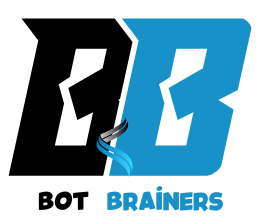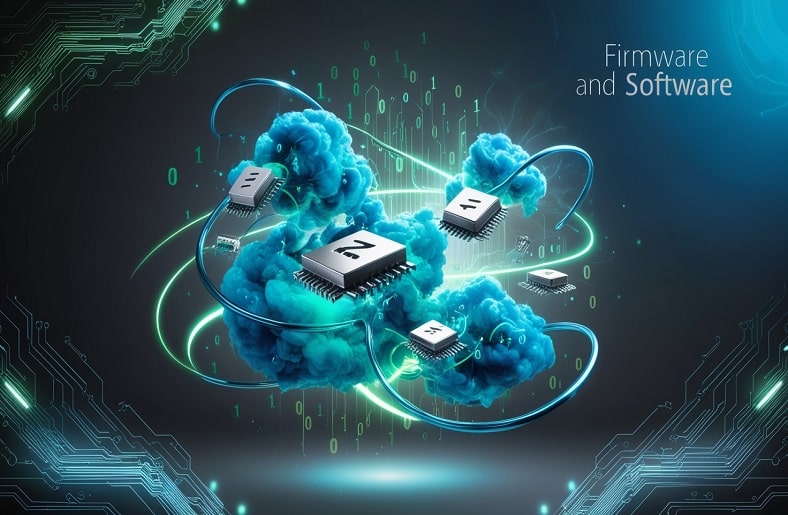In the world of technology, terms like firmware and software are often used interchangeably, leading to confusion. While both are essential components of modern devices, they serve different purposes and operate in unique ways. To clear up the confusion, this article dives into the difference between firmware and software, their roles, and why they are crucial for devices to function effectively.
What is Firmware?
To understand the distinction, let’s first answer: what is firmware?
Firmware is a specific type of software that is permanently embedded into a device’s hardware. It serves as the low-level control code that enables the hardware to operate as intended. Think of it as the “instruction manual” for the hardware components. Firmware bridges the gap between hardware and higher-level software, ensuring the device performs its basic functions.
Characteristics of Firmware:
Embedded in Hardware: Stored on read-only memory (ROM) or flash memory chips within the device.
Low-Level Operations: Controls basic hardware functionalities, such as booting up a computer or managing a printer’s functions.
Rarely Updated: Updates are less frequent and usually require specialized tools or processes.
Examples of Firmware:
BIOS in computers, Embedded control systems in home appliances (e.g., washing machines), Firmware in IoT devices like smart thermostats
What is Software?
Software, on the other hand, refers to programs and operating systems that users interact with directly or indirectly. It provides instructions that tell the hardware what tasks to perform. Unlike firmware, software operates on a higher level and is not embedded into the hardware permanently.
Characteristics of Software:
Dynamic Nature: This can be installed, updated, and removed easily.
User Interaction: Often includes applications like word processors, web browsers, and mobile apps.
Multiple Types: Includes system software, application software, and middleware.
Examples of Software:
Operating systems like Windows, macOS, and Linux, Applications like Microsoft Word or Adobe Photoshop, Web browsers such as Google Chrome and Firefox
Firmware vs. Software: Key Differences
Now that we have a foundational understanding of each term, let’s explore the difference between firmware and software in detail:
| Aspect | Firmware | Software |
| Definition | Low-level code embedded in hardware | High-level programs for user tasks |
| Functionality | Controls hardware operations | Provides instructions for tasks and actions |
| Storage | Stored in ROM, EEPROM, or flash memory | Stored on hard drives or cloud systems |
| Update Frequency | Rarely updated; requires specific processes | Frequently updated; easy installation |
| Examples | BIOS, printer firmware, IoT device firmware | Operating systems, apps, and games |
Is Firmware the Same as Software?
firmware is a subset of software. Firmware operates at a foundational level, managing hardware functionality, while software operates on top of this layer, providing users with the tools and features they need.
The Relationship Between Firmware and Software
Firmware lays the groundwork for hardware operations, enabling software to perform user-driven tasks. For instance:
A computer’s BIOS (firmware) initializes hardware components and loads the operating system (software). A printer’s firmware controls the mechanics, while the software on your computer manages print jobs.
Firmware is Software: A Closer Look
Technically, firmware is software, but it has a specialized purpose. The term “firmware” emphasizes its embedded nature and role in directly interacting with hardware. Here’s how they connect:
Firmware is software programmed into a physical device. Unlike general-purpose software, firmware is specific to the hardware it supports. It often acts as a mediator between the hardware and other types of software.
Why Firmware Matters?
Firmware plays a crucial role in device functionality:
Without firmware, hardware cannot perform basic operations. Firmware ensures the compatibility of the device with higher-level software.
Why the Difference Between Firmware and Software Matters
Understanding this distinction is essential for anyone working with technology, from IT professionals to everyday users. Here’s why:
Troubleshooting and Maintenance
Knowing whether an issue is firmware-related or software-related can streamline troubleshooting. For example, a device failing to boot may need a firmware update, while a crashing application likely needs a software fix.
Device Security
Firmware vulnerabilities can compromise device security. Ensuring firmware is up-to-date protects against exploits targeting embedded systems.
System Upgrades
Understanding the role of firmware and software helps users decide when and how to update. Firmware updates may require more caution, as they can permanently alter hardware functionality.
Common Applications of Firmware and Software
In Consumer Electronics
Firmware: Controls basic functions in TVs, smartwatches, and cameras.
Software: Powers apps, streaming platforms, and games on these devices.
In Automotive Systems
Firmware: Operates embedded systems like engine control units (ECUs).
Software: Provides navigation, entertainment, and user interfaces.
In Industrial Equipment
Firmware: Controls machine tools and robotics.
Software: Enables process optimization and monitoring.
The Evolution of Firmware and Software
Both firmware and software have evolved significantly over the years.
Firmware Advancements
The transition from ROM to flash memory enables easier updates. Modern devices can update firmware remotely, reducing downtime.
Software Innovations
Cloud computing has revolutionized how software is delivered and accessed. AI-powered applications are reshaping industries with advanced capabilities.
Future Trends in Firmware and Software
Increased Convergence
The lines between firmware and software are blurring as firmware becomes more dynamic and capable of performing software-like functions.
Security Focus
With the rise of IoT, firmware security will remain a critical focus to protect interconnected devices.
AI and Machine Learning
Firmware will increasingly incorporate AI-driven features for smarter hardware operations, while software will leverage AI for advanced analytics and automation.
Seamless Updates
Future updates for both firmware and software will become more automated, ensuring minimal disruption for users.
The History of Firmware and Software
Firmware’s Origins
Firmware dates back to the early days of computing when programmable ROMs were used to control hardware. Early firmware had to be hardcoded and was not updateable. The introduction of flash memory revolutionized firmware, making updates more accessible.
Software’s Evolution
The software began with simple programs written for early computers. Over time, it evolved into complex systems, including operating systems, application suites, and cloud-based solutions. The increasing demand for user-friendly interfaces led to the explosion of software applications we see today.
Examples of Common Firmware Updates
Firmware updates are typically issued to:
Fix Bugs: Address issues in the device’s operation.
Add Features: Expand device functionality, such as adding smart home compatibility to appliances.
Improve Security: Patch vulnerabilities in IoT devices or embedded systems.
Examples:
Smartphones: Updates to baseband firmware improve signal reception.
Printers: Firmware updates ensure compatibility with new operating systems.
Gaming Consoles: Updates provide performance improvements and new features.
Comparing Firmware and Software Updates
Firmware Updates
Often requires downloading files from the manufacturer’s website or through a dedicated tool. Usually completed less frequently. A failed firmware update can “brick” a device, making it unusable.
Software Updates
Delivered seamlessly through app stores or over-the-air (OTA) updates. Frequently issued to improve features or address bugs. Minimal, as updates can be easily re-installed.
Firmware in Everyday Life
Firmware is present in almost every device we use today. Here are more real-world examples:
Smartphones: Baseband firmware manages network connectivity.
Televisions: Firmware controls picture settings and remote compatibility.
Wearables: Fitness trackers use firmware to manage sensors and sync data.
Vehicles: Modern cars rely on firmware for engine control, navigation, and safety systems like airbags.
Importance of Firmware in IoT Devices
As the Internet of Things (IoT) grows, firmware is playing a pivotal role in:
Device Connectivity: Firmware ensures devices communicate effectively in IoT networks.
Security: Regular firmware updates protect IoT devices from cyber threats.
Energy Efficiency: Optimized firmware enhances the power management of IoT devices.
Challenges in Firmware and Software Development
Firmware Challenges
Hardware Dependency: Firmware is tailored to specific hardware, making development complex.
Update Risks: Errors during updates can render devices non-functional.
Security: Embedded systems are often targeted by attackers due to vulnerabilities in outdated firmware.
Software Challenges
Compatibility: Ensuring software works across different devices and operating systems.
Bug Fixes: Frequent updates are required to address issues.
User Expectations: Consumers demand intuitive and feature-rich software.
Emerging Technologies Shaping Firmware and Software
1. Artificial Intelligence (AI)
AI is being integrated into firmware for predictive maintenance and real-time decision-making.
Software applications are leveraging AI for advanced data analytics and automation.
2. Blockchain
Firmware security can be enhanced using blockchain to verify updates and ensure integrity.
Software in the blockchain space is revolutionizing industries like finance and logistics.
3. Edge Computing
Firmware is critical for edge devices that process data locally, reducing latency.
The software enables seamless interaction between edge devices and cloud platforms.
Security Best Practices for Firmware and Software
Firmware Security Tips
Regularly check for updates from the device manufacturer. Avoid downloading firmware from unverified sources. Disable unused hardware interfaces to reduce attack vectors.
Software Security Tips
Use reputable antivirus and anti-malware tools. Keep all applications updated to the latest version. Monitor permissions granted to installed software.
Conclusion
In summary, while firmware and software share similarities, they serve distinct purposes. Firmware acts as the backbone of hardware operations, while software provides user-facing functionality. By understanding the difference between firmware and software, you can make informed decisions about updates, maintenance, and troubleshooting for your devices.
Whether you’re setting up a smart home system, managing office technology, or simply curious about the devices you use daily, this knowledge will empower you to navigate the tech landscape with confidence.


